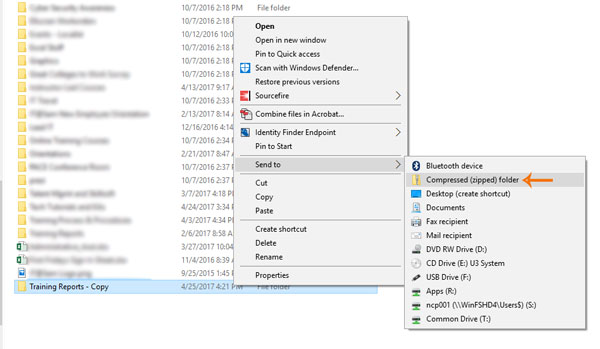
You can search for the files using file explorer and compress them right from the Files Explorer’s Zip Menu.ġ. This is convenient for those files which are not located on your desktop. Window 10 File Explorer offers a dedicated Zip tab in its ribbon menu. Zipping Files From Windows 10 File Explorer Hit Enter to accept the suggested filename or change the file name. Navigate to Send to and select Compressed (zipped) folder.Ĥ. After selecting all the files, Right-click while still holding down the Ctrl keyģ.

Since the files are non-consecutive, hold down the Ctrl key and click on individual files that you want to select for compressingĢ. Zipping Non Consecutive Multiple Filesįollow these steps when you want only the selected files from a group of files in a folder or desktop to be zipped.ġ. Next click on Compressed (zipped) folder (see image below)ĥ. After selecting all the files, Right-clickģ. You can try this or select files one by one by holding the Ctrl Key (if this suits you better).Ģ. A faster way to select all consecutive files in a folder is to click on the first file, hold down the Shift key and then click on the last file. Zipping Consecutive Multiple Filesįollow these steps in case you are trying to zip multiple consecutive files in a folder, all of which need to be zipped.ġ. Hit Enter to accept the suggested filename, or you can change the file name to whatever you want to. On the side menu select Compressed (zipped) folder (see image below)ĥ. On the drop down menu locate Send to and click on it.Ĥ. Select the File or Folder that you want to compress.ģ. Now that we know about the advantages of zipping files, let us explore a few methods of zipping files and folders in Windows 10. Zipped files/folders can also be password protected and encrypted to protect data. This makes it easier to share a group of files.Ĥ. You can zip multiple files into a single compressed folder. Zipped files are easier and quicker to share, as they take up less spaceģ.


 0 kommentar(er)
0 kommentar(er)
